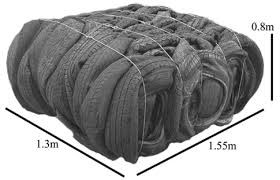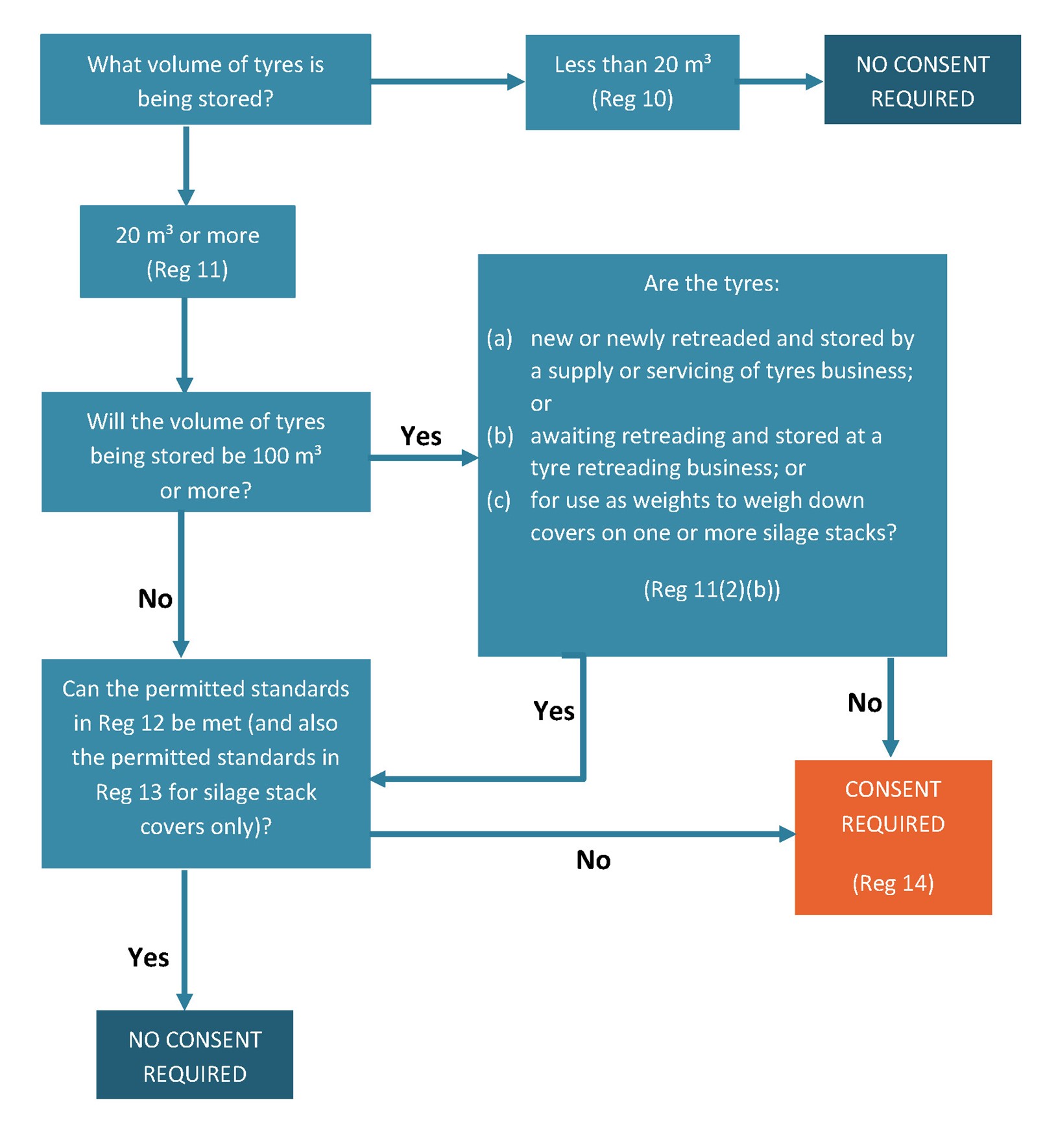-
-
-
-
-
-
-
-
-
-
-
-
-
-
Outdoor tyre storage
-
-
New Zealand generates around four million used car tyres and one million used truck and other tyres every year (Ministry for the Environment, 2021). The number of tyres entering the country is also rising. Without adequate markets for them, many used tyres are stored in outdoor stockpiles.
Storing tyres outdoors can harm human health and the environment, especially if there is a fire. These risks were not addressed fully in the previous regulatory framework of the Resource Management Act. The National Environmental Standards for Storing Tyres Outdoors (NES-STO) were introduced in August 2021 to minimise these adverse environmental impacts.
This page has information about when you need a resource consent for tyres stored outside on your property and what you need to do to comply with the NES-STO.
You don’t need a consent to store tyres outdoors if:
- you are storing less than 20m3
- you are storing between 20m3 and 100m3 and can meet the permitted standards in Reg 12 and Reg 13 (silage stack covers only)
- you are storing more than 100m3, you can meet the permitted standards, and the tyres are:
- new or newly retreaded and stored by a business that supplies or services tyres
- waiting to be retreaded and stored and at retreading business, or
- used as weights for silage stack covers.
You do need a consent if:
- you are storing more than 20m3 and cannot meet the permitted standards in Reg 12 and Reg 13 (silage stack covers only)
- you are storing more than 100m3 and the tyres are not:
- new or newly retreaded and stored by a business that supplies or services tyres
- waiting to be retreaded and stored and at retreading business, or
- used as weights for silage stack covers.
The flow chart below takes you through the options. It has been taken from the Ministry for the Environment’s NES-STO Users’ Guide – please refer to the full guide for further guidance.
There are several ways you can measure the volume of tyres you are storing. This information has been taken from the Ministry for the Environment’s NES-STO Users’ Guide – please refer to the full guide for further guidance.
Approach 1
You can calculate the volume of a stacked tyre pile by multiplying its length x depth x height. This works best if the pile is roughly in a cube shape

Approach 2
You can also estimate the number of tyres. A stack of approximately 250 standard car tyres is 20m³. Approximately 1,250 standard car tyres fit in 100m³. This approach only works for measuring standard car tyres. It doesn’t work for larger truck tyres or tyres from heavy machinery.
Tyre bales compress the tyres into rough cubes so you can estimate the volume by multiplying depth x length x height. Because the tyres in a bale are compressed, you cannot use the number of tyres to calculate the volume (you can fit more tyres in the same area).
Methods of stacking
Where possible, stack tyres so they don’t spread too far over the ground and keep them in a contained area.
Two common methods of stacking tyres:

Please visit your local council’s website to check whether they have facilities that accept tyres.

Central Otago District Council
Ph: 03 440 0056 | Email: info@codc.govt.nz | 1 Dunorling St, Alexandra

Clutha District Council
Ph: 0800 801 350 | help.desk@cluthadc.govt.nz | 1 Rosebank Terrace, Balclutha

Dunedin City Council
Ph: 03 477 4000 | Email dcc@dcc.govt.nz | Civic Centre, 50 The Octagon, Dunedin |

Queenstown-Lakes District Council
Ph: 03 441 049910 | services@qldc.govt.nz | Gorge Rd, Queenstown |

Waitaki District Council
Ph: 03 433 0300 | Email: service@waitaki.govt.nz | 20 Thames Street, Oamaru

